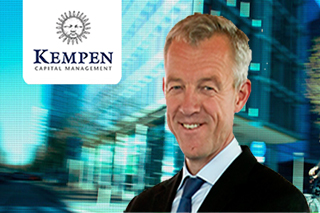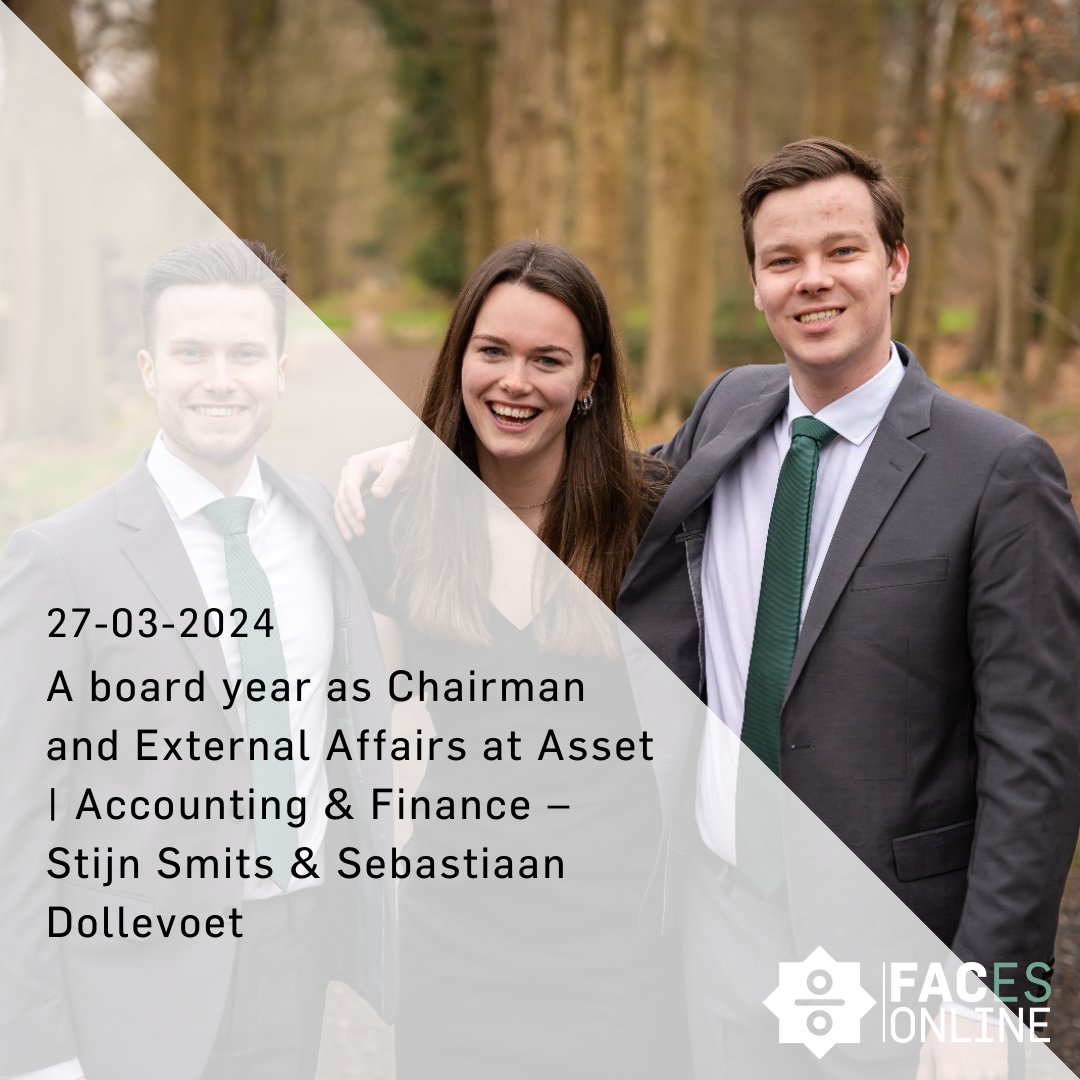Disclaimer: This article is for entertainment purposes only and cannot be used for financial advice. Since its inception, Bitcoin has caught the


Can you please tell something about yourself, your career and about your function as CIO at Kempen Capital Management?
My name is Lars Dijkstra, Chief Investment Officer at Kempen Capital Management for the last 11 years. I previously worked for the Philips Pension Fund in Eindhoven for 14 years, making a total of 25 years in asset management. The content of these jobs is not that different if you compare the two. However, the job I have now is in a more commercial environment, where we need to work hard to earn every single client. Education wise, I studied macroeconomics in Groningen and completed an internship at Oyens en van Eeghen in Amsterdam. At Kempen Capital Management, I am in the management team responsible for the investment teams. This involves all of our niche product strategies, which started with the small caps Kempen Orange Fund 25 years ago and has grown to include active strategies such as high dividend equity (Europe and global), listed real estate, credits and hedge funds. We also offer a fundamental indexation and smart beta strategies in a few areas of the market. Basically, we focus on the less efficient parts of financial markets, where we have a higher chance of adding value for our clients. Here at Kempen Capital Management we do not run two hundred different investment funds; we are not a supermarket of funds. We are very focused on a few niche areas and that is what I believe in.
Can you briefly explain ‘long-term shareholdership’, does it involve more than holding stocks for longer timeframes?
There are a lot of ways to explain what it is. I wrote an article on the topic a year ago titled ‘Rekindle the spirit of Keynes’. Keynes invested this way in the 20s and 30s, followed by Benjamin Graham, and then Warren Buffet after that. All these men did this ‘long-term engaged shareholdership’ a long time ago; it is not a new concept. However, the change in our industry since the 80s and 90s is that benchmark investing has become the goal instead of the mean. Shareholders, companies, pension funds, they all have a twelve months or even shorter time frame, which leads to the question: What is more important short-term profit or long-term value? The average turnover of a share on Wall Street is less than twelve months, so the horizon has become very short. According to a global survey of McKinsey 80% of CFOs cancel their investment plans if it will negatively impact the next quarterly earnings figure. Short-termism is one of the main reasons that in the developed world we are now at a 40-year low of private investments (CAPEX) around the globe and at the same time an all-time high of share buybacks. There is a lot of evidence that the world has become too short-term and it is getting even worse.
To counteract this, we think we should look five to ten years into the future when making an investment decision, focusing therefore on companies instead of stocks. It seems a subtle difference, but I think it makes a huge difference. It is about focusing on long-term sustainable cash flows of companies instead of the noise of the stock market (going up and down) and the last quarterly earnings figure. Another way of saying it is that it is also a transformation from the focus of sell side to buy side. A good example in the Netherlands is Unilever. Paul Polman actively promotes to talk only with long-term buy side shareholders instead of the sell side analyst, who is on the phone for last quarterly figures and next quarterly outlook. It is about the long-term horizon, but this is not the same as saying buy and hold. We are not saying you should buy and look ten years later at what happened. Yet, I think with this way the average turnover of the portfolio will be much lower than normal.
I heard that Kempen Capital Management is changing their focus towards long-term shareholdership. What will be the major difference in business under this strategy?
As I earlier said, small caps are our roots. The philosophy has always been long-term shareholdership there, so in that sense we are not changing anything. What is new is that we are applying this now also to large caps. In small caps you could say: ‘in this fund we take a five percent stake in companies, meaning we own five percent of each company’. So by definition, we have a longer term view, as you cannot trade daily in and out. You have more dialogue with management, and more influence as well. That is the whole long-term small-cap engaged shareholdership idea. But transforming this to the large cap world is more difficult, as you cannot normally own a five percent stake. However, we think that large cap companies are more and more, like the example of Unilever, interested in listening to smaller shareholders, granted they are interested in the long-term strategy of the company. A different way to characterize this is focusing more on stakeholder value over shareholder value. Out of a recent Harvard research paper of Professor Eccels et al., companies mainly driven by stakeholder value decisions not only had share prices of four percent better per year over the twenty year period, but also higher return on equity, return on assets, lower employee turnover, and other real economic measures, compared to companies taking shareholder oriented value decisions.
Who holds the most power in shifting towards long-term investing: the asset owner, asset manager, or companies?
I think it is difficult to say who has the most power. It is really about all three of them. But go one-step back, and think ‘why are we in business?’. For asset managers it is because the savings of our clients today need to be efficiently allocated in productive capacity for the future. Basically, the investment value chain is formed because these savings needs to go, in our capitalistic world, to companies, to make the good returns and pay dividends back to the savers. This is the whole chain, which goes on and on; all the people in between are just agents. Pension funds are agents. Asset managers are agents. You have the regulators, media, consultants, so there is a lot more around it, but the main players are those three. At the end of the day, it is about: how do we get productive capacity out of the savings (creating value in the chain)? Obviously, you have a lot of principle agent problems in between. They all want to look out for their self-interests as well. The key here is that there needs to be more alignment of interests in the whole chain. Mainly, between asset owners and asset managers, you need more long-term mandates and alignment, which will minimize the agency issues. Another area is between asset managers and corporates. If you invest as a long-term engaged shareholder, you can be more involved and maximize your impact on these companies. However, corporate boards themselves may have a very short-term view, influencing management to act short-termistic. So, if you talk about where the biggest problem in terms of short-termism is, it is not only with shareholders, but also corporate boards. Ultimately, they are all interlinked.
Investment managers are critiqued by investors in their ability to achieve short-term results, how do you address this misalignment to incentivize managers to focus on the long term?
Years ago, at Kempen Capital Management we started looking not at a one-year track record of performance, but at a three-year rolling record. Now, we have extended it already for some investment strategies to five years (three to five years rolling investment returns). Obviously, you would also like to have from the clients a long-term performance target instead of a short-term, so it is the whole chain that you should try to get more long-termed for incentive purposes. Further, it is not about chasing corporates on their quarterly or twelve months’ earnings, but on a more long-term strategy, which includes the incentive structure of companies. We are engaging more on this, not only for the smaller companies, but also with the larger companies to try to shift to more long-term incentive schemes.
The Kempen Capital Management dividend fund focuses on maintaining stocks that have a high dividend, and drop stocks if they go below a certain threshold. How does this incorporate long-term investing?
First of all, it is a very disciplined investment process. There are approximately one hundred global stocks in the portfolio, with an equally weighted philosophy. In this sense, we do not look at market cap drifting or the short-term. The academic background for this is that if companies focus on a high dividend payout, they have a higher capital discipline than companies who do not. By setting up dividend policies, companies implicitly say something about how optimistic they are on the long-term. We know some dividend strategies from peers which just add on top of the dividend payout the share buy backs to get a sort of total dividend number, which we think is a completely different ball-game, and there you end up in short-termism. We focus on a minimum three percent dividend, and while others say ‘given how low interest rates and dividend yields are, we drop it to two percent’, we maintain our threshold.
The only thing that leads to a higher turnover in this strategy than probably needed for a long-term horizon is the quarterly rebalance. The main reason behind this rebalance is that every quarter, you look at the stocks that went up and down in price and you rebalance back. You take some profit from the winners and recycle it back to the losers while still keeping the same one hundred stocks. In the longer-term, that really adds value, but it leads to higher turnover levels. I would say the philosophy behind the whole approach is long-term oriented, because it is about long-term sustainable dividends.
Certain companies are no longer issuing quarterly reports as a way to combat the emphasis on short-term results. Do you think this is beneficial or does it add harmful information asymmetry?
I do not know if ending quarterly reporting is the best way forward, because you want companies to be transparent, of course. I think it has more to do with the quarterly guidance and the forward-looking statements on a quarterly horizon, than the quarterly report itself. In the quarterly report you can focus on the more long-term business strategy or the long-term metrics management has set for the company. Again like Unilever as an example, they stopped giving quarterly guidance to analysts. The focus is therefore more on the longer-term outlook, targets, strategy and SRI.
I think that reporting of companies also needs to be more qualitative and long term strategy oriented, instead of todays’ focus on short term quantitative targets. The same is true for us, we report to our clients on a monthly or quarterly basis on what we have earned. That is the only number clients are interested in, which leads to the short-term focus on quantitative numbers. But in the long-term engaged portfolios, you have more concentrated portfolios, because you cannot engage with three thousand companies. You can engage with thirty or forty companies. Therefore, you start to communicate and report more about just what is occurring in those companies on a more qualitative basis or with different metrics than only the EPS growth. If you do want to look at quantitative metrics, it should be in the underlying cash flow growth of companies over time instead of the share price. In the long run, the share price will follow. For example take IBM, the fluctuation of the share price around the long-term intrinsic value has been huge. The more important question to consider is ‘Do you still think that the intrinsic value will grow?’ Share prices very often have huge discounts or premiums against the intrinsic value.
Overall, how can long-term shareholdership be reached (what are the main points you have to take into account)?
What do we do at Kempen is first of all, talk about this with our clients and prospects. Investors like family offices, which do not have to bother about benchmarks or regulation, and are more often than not, from entrepreneurs who have run companies themselves in the past, are more easily inclined into this type of thinking. It is also easier to implement for them. A lot of pension funds, especially in the Netherlands, went to a market cap passive strategy in the last five or ten years, but even they are interested in this new approach. We talk with our clients, labor unions, consultants and regulators… I had a meeting with CIO’s of other Dutch asset owners and asset managers recently, to my pleasant surprise more and more organizations not only talk about this, they also implement the walking. Sometimes with only a small amount of money, in a pilot portfolio, but at least it has started. Kempen Capital Management became a partner of the global Focusing Capital on the Long Term (FCLT)-project, we started the new website (www.shiftto.org), and we started a team to do the same as we did with small caps to the large caps.
Do you think that long-term shareholdership can have a very large impact on corporate ESG levels?
Yes, basically you already see it. Long-term investing from a financial point of view and from an ESG non-financial point of view, are clearly going along in the same direction. For example, one of the main global challenges is climate change, and it is becoming a more important topic. Shell, for instance, changed recently its strategy towards renewables and investing more in that direction. The whole energy space will become more important. We also have a strategy in real estate, where it is important to invest in more long-term low energy buildings. ESG rating for companies are also being measured now around the globe by some parties, such as MSCI ESG research, which we use for gaining transparency. We also see the larger pension funds in the Netherlands coming out with targets, like PFZW saying they want to a 50% reduction in CO2 in their portfolio by 2020. It becomes measurable with these targets going forward, and it is not only in the Netherlands, but throughout Europe. Although I think Europe is in the lead here, it is also gaining more importance to US funds. In the future, I think joined forces will occur more often between larger shareholders in order to really change something in a company, so there will be more cooperation between the larger shareholders to get things done if companies are not willing to listen.
What advice would you like to give to finance and accounting students of Tilburg University?
My advice in general is: follow your passion. If you are choosing a direction of study or an internship, just do things you would like to do instead of looking for where the best job opportunity is. At the end of the day you will have the most fun and success if you focus on what gives you the most energy, what your passion is about. Secondly, I would say challenge the existing finance literature. To quote your own University: ‘Never stop asking!’ Finance at universities and the CFA-program still starts from the efficient market paradigm. We know from the real world that it just does not hold. So do not focus only on the hard-core numbers of academics. If you want to understand the world a little bit more, then you should spend a lot more time on economic history.
Furthermore, make sure you study the behavioural finance side of things. The strange episode of the last 10 years with the financial crisis makes it clear that markets are not efficient. We are in a very strange world with central banks, and no one knows exactly how this ends. Not one of the central bankers has gone through this period before in their life, so we will see how it ends, but it is an experiment. If you would have studied the history books of the thirties, you understand a bit better why the US policy makers behave like they behave because their historical trauma of course is the great depression. At the same time, you understand that mister Schäuble, Merkel and the Germans behave like they behave because their trauma is the Weimar Republic (high inflation). Both are 100 years ago, but still influence the most important economic decisions of today.






















